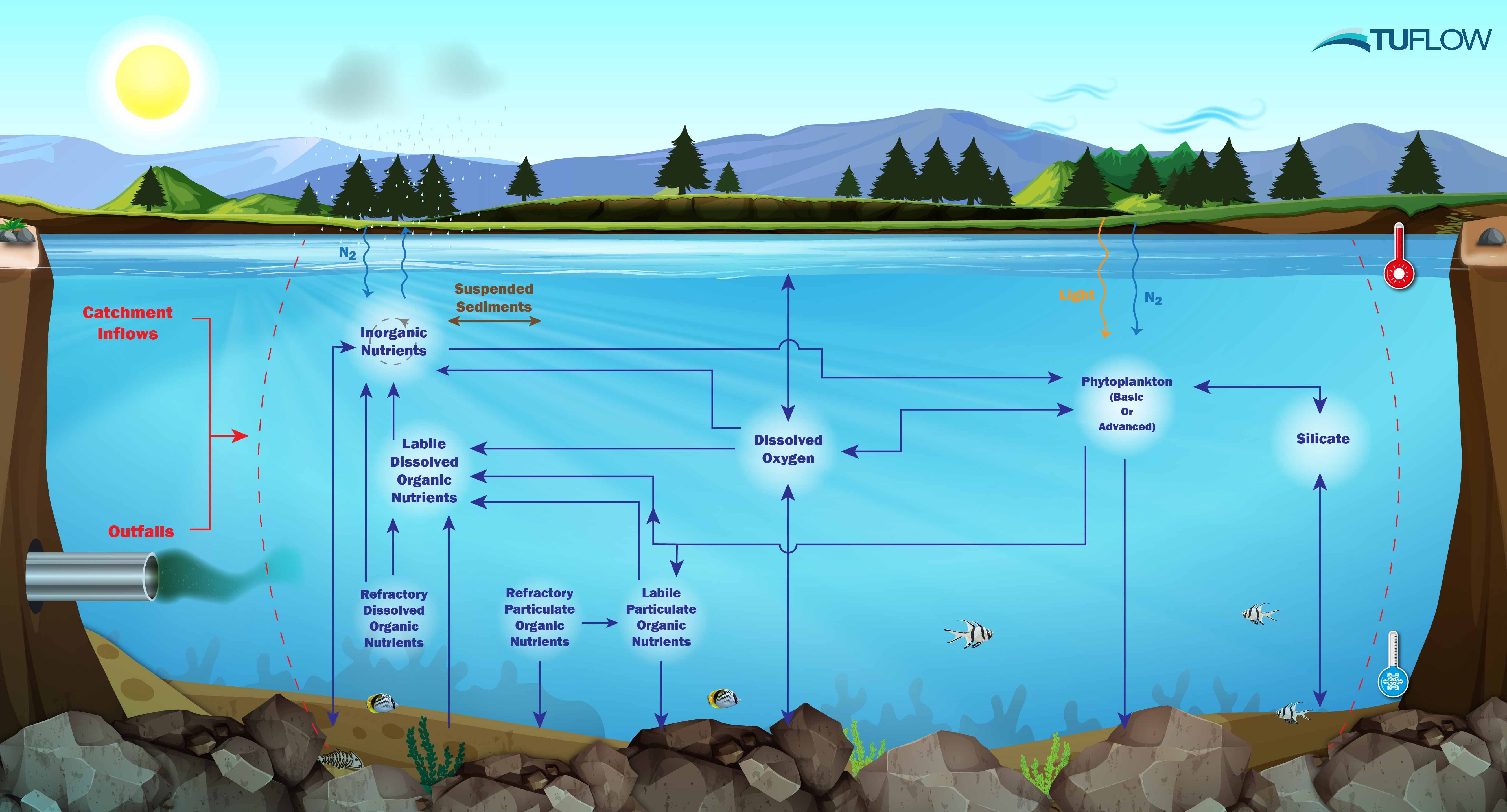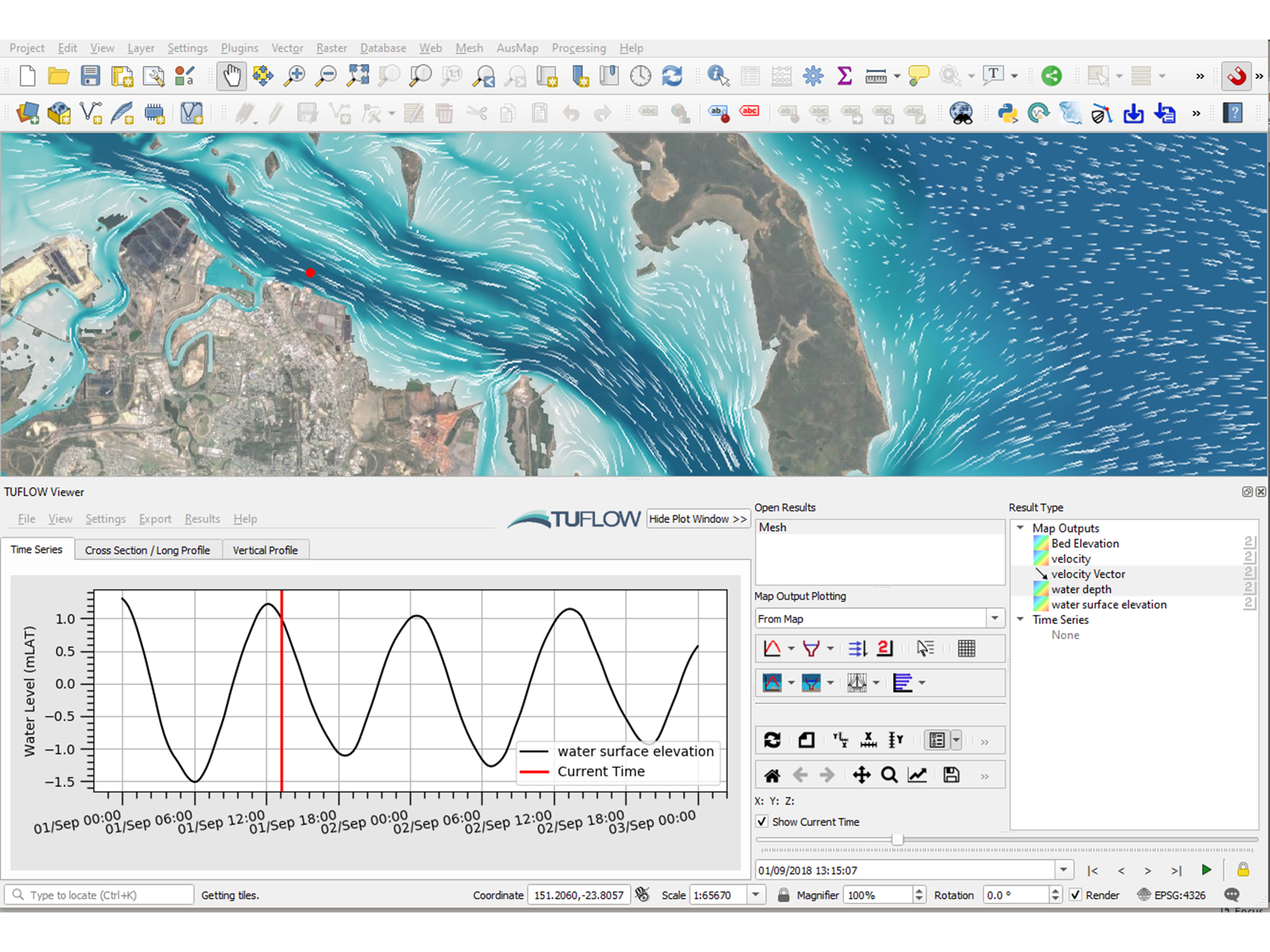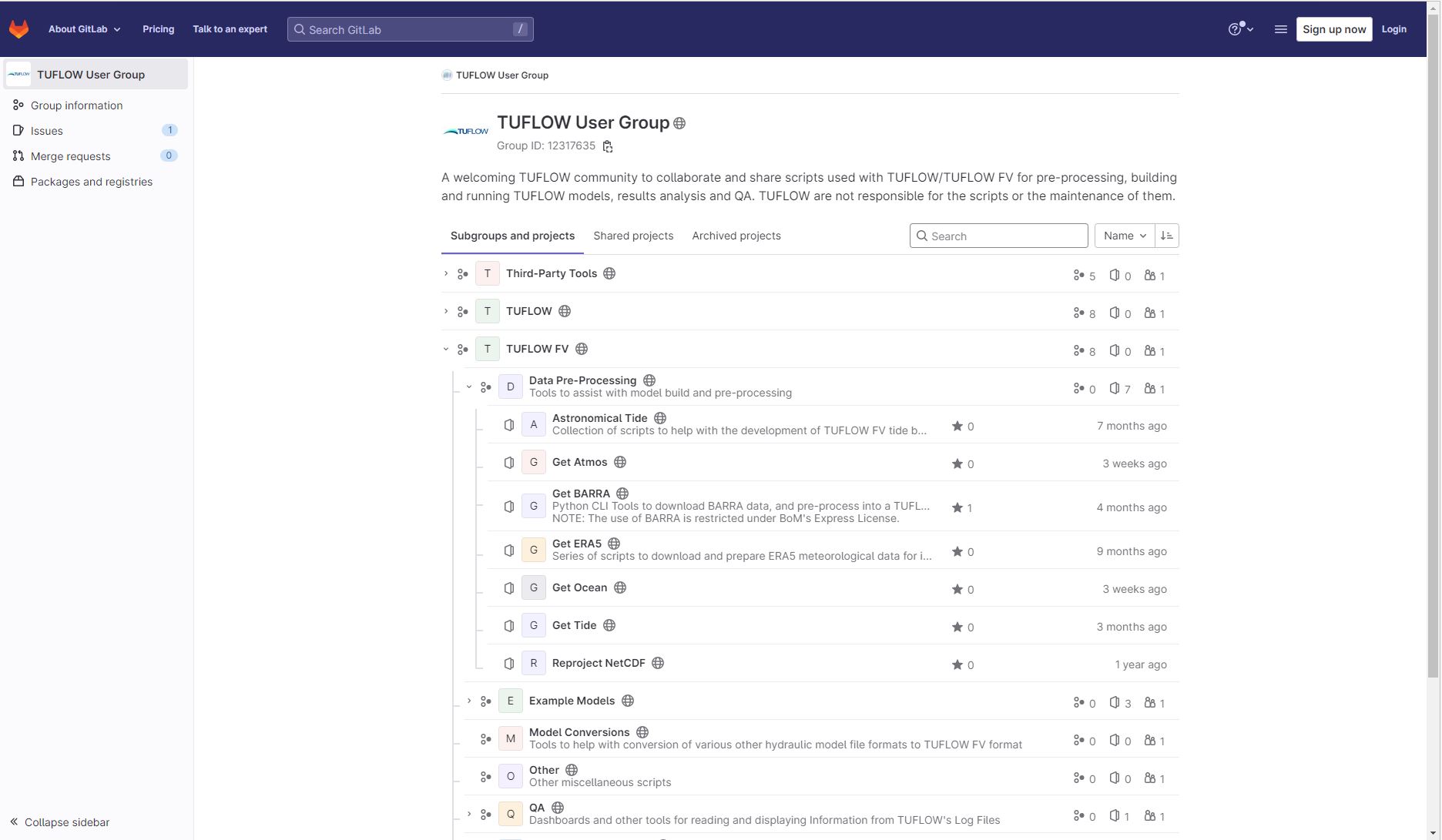We are excited to announce the 2023.0 release of TUFLOW FV. This major release marks the formal unveiling of our new state-of-the-art supported Water Quality Module. In addition, the release is picked full of significant upgrades and enhancements including: updated GIS, hydraulic structures, pre and post processing tools and more.
The TUFLOW FV Water Quality (WQ) Module is the first fully supported and documented water quality simulation product offered by TUFLOW. It allows for the simulation of 2D and 3D water quality processes in lakes, reservoirs, estuaries, freshwater streams, urban waterways, wetlands, coastal environments and more. It seamlessly integrates with TUFLOW FV, using the familiar and well-established TUFLOW style syntax, and comes packaged with: a full suite of library parameter defaults to get water quality models up and running quickly; a fully documented and interactive user manual that includes all supporting science and command instructions; wiki support, including advice (for example) on how to use diagnostic variables in water quality model calibration projects; the ability to simulate in common laboratory units of milligrams per litre; the generation of dedicated water quality simulation log files, and free tutorial and demonstration models that include a mass conservation model with MATLAB and Python post processing tools. Critically, the TUFLOW FV WQ Module is underpinned by the world leading and internationally trusted science and algorithms developed at the University of Western Australia, and (for the first time) is supported directly by the TUFLOW team via support@tuflow.com.
This first release of the software allows for simulation of dissolved oxygen, silicate, inorganic nutrients, organic nutrients (labile, refractory, dissolved and particulate) and phytoplankton (as many groups as needed). The simulated environmental processes captured include sediment-water and atmosphere-water interface exchanges and internal processing. The latter includes full nutrient cycling and phytoplankton dynamics. The freely available mass conservation model shows that these variables are conserved to within 0.02% over a one month simulation, equating to exceptional mass conservation.
In an innovative extension to the way that manuals have previously been delivered to users, the Water Quality Module manual uses a new web based format that supports interactive display of tables, figures, network diagrams and graphs. This added functionality is intended to help users better understand and exploit the complexities of water quality modelling – not just to guess about what parameters to change. We are currently considering transfer of our other manuals to this digital platform. If you get a chance, please take time to look at the TUFLOW FV Water Quality Module User Manual and provide feedback to support@tuflow.com. The feedback we receive will influence whether our other modelling manuals remain in their current pdf form or are transferred to the online platform.
In short, the TUFLOW FV WQ Module and its wealth of resources has been built with only one thing in mind: you. This new TUFLOW offering helps take the guesswork out of water quality modelling.

Whilst TUFLOW FV has offered GIS integration for some time, the new release includes many enhancements to this integration, including the ability to: specify nodestrings using meaningful names rather than numbers, either specified in GIS or through a mesh .2dm file directly; specify QC and QC_POLY inflows as named GIS points and polygons respectively, rather than via the legacy x/y coordinate specification method; specify linked structure zones in GIS, and allow for coordinated model output at multiple points specified in GIS. We’ve also added GIS plotting of flux and point outputs compatible with our QGIS TUFLOW Viewer Plugin.
All these enhancements now allow users to develop their TUFLOW FV models with more extensive and robust GIS support, and to more easily interrogate results. All TUFLOW FV outputs, including from the WQ Module, remain accessible through the freely available QGIS TUFLOW Viewer Plugin.

The TUFLOW FV hydraulic structure calculations and methods have been enhanced and updated to include a range of features that assist in developing robust hydrodynamic models. These features include: stability improvements; the ability to specify 3D (i.e. vertical) flow distributions for linked nodestrings; weir submergence calculations; automatic calculation of structure entry and exit losses; the option to use total head in culvert calculations, and other syntactic upgrades.
Overall, these upgrades will provide a more consistent and versatile approach when working with TUFLOW FV’s structure simulation capabilities.
The TUFLOW FV Python and TUFLOW FV MATLAB Toolboxes have been upgraded to offer a more robust user experience. There are also several new tools that assist users to develop TUFLOW FV boundary conditions from publicly available datasets via our Gitlab TUFLOW User Group. For example, a newly added Python script allows a user to automatically access global atmospheric modelled/reanalysis data, and after specifying a model bounding box, extract the relevant third party data and preprocess it into correctly formatted TUFLOW FV boundary condition files. Similar tools are available for extraction and preprocessing of oceanic boundaries. This makes the set up of coastal ocean (and other) TUFLOW FV models much easier than has historically been the case. These tools will continue being expanded into the future.

The suite of TUFLOW FV tutorial models has been upgraded and expanded to align with the syntax and features available in the new TUFLOW FV release. A water quality tutorial model is now available as Tutorial Module 09. All tutorials are able to be downloaded and executed for free without the need for a TUFLOW FV licence.
TUFLOW FV 2023.0 for both Windows and Linux operating systems is available for download via the TUFLOW Downloads Page. For a full description of all the new features and enhancements please check out our latest TUFLOW FV Release Notes.
Sincerely from everyone at TUFLOW. We hope you enjoy TUFLOW FV 2023.